Michael Grinich's ERC 2025 Opening Keynote: Crossing the Enterprise Chasm in the Age of AI
Michael Grinich's opening keynote at Enterprise Ready Conference 2025 introduced the Enterprise Chasm concept and unveiled six major product launches while exploring how AI is fundamentally changing software development.
This post is part of our Enterprise Ready Conference 2025 series. Read the full recap here.
The Enterprise Chasm: Why Product-Market Fit Isn't Enough
After welcoming attendees to SF Jazz Center and encouraging them to connect with the remarkable community assembled in the room, Michael introduced a framework that would anchor the entire conference: the Enterprise Chasm.

Drawing on Geoffrey Moore's classic "Crossing the Chasm," Michael explained how all technology products follow an adoption curve—from early innovators and hackers to visionaries, then the early majority, and eventually skeptics.
You can watch Michael's complete keynote below:
Moore's critical insight was that products must cross a gap between early adopters and mainstream users to achieve mass market success. Products that fail to cross this chasm simply fail.
But Michael proposed a parallel concept specifically for B2B software: the Enterprise Chasm. This gap separates applications built for small teams and individuals from those that achieve breakout success within large organizations.
It's the difference between a product with strong product-market fit and one that can actually go public.
The key insight: getting product-market fit is necessary but not sufficient to win your market. You also need to become enterprise ready. Without building the specific capabilities that enterprises require, your product will struggle to grow, and competitors who do build these features will take your market.
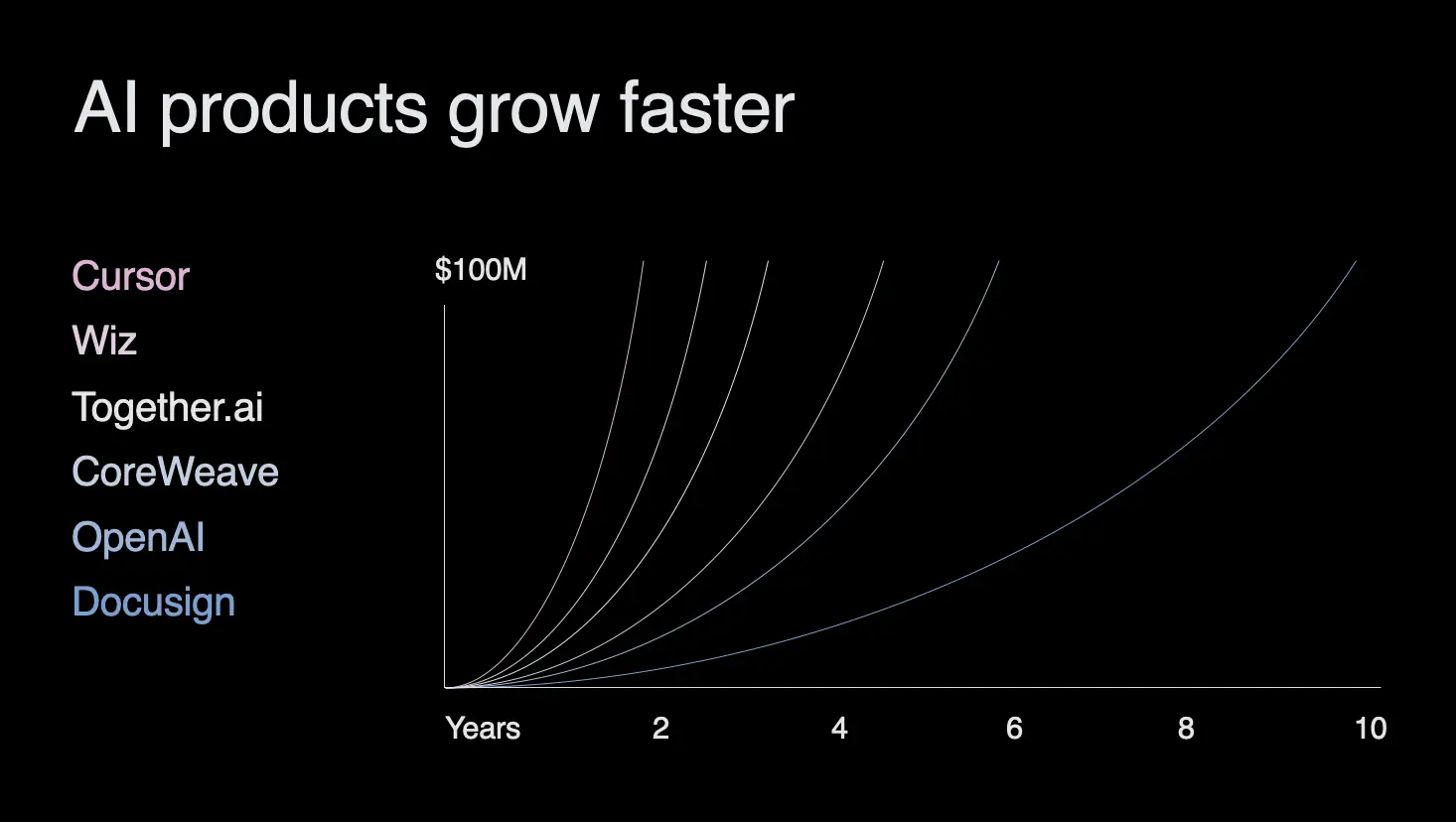
What It Means to Be Enterprise Ready
So what are these features that help companies cross the Enterprise Chasm? Michael outlined the core of WorkOS's product offering—the infrastructure for enterprise features that companies need but don't want to build themselves.
AuthKit: The Identity Platform
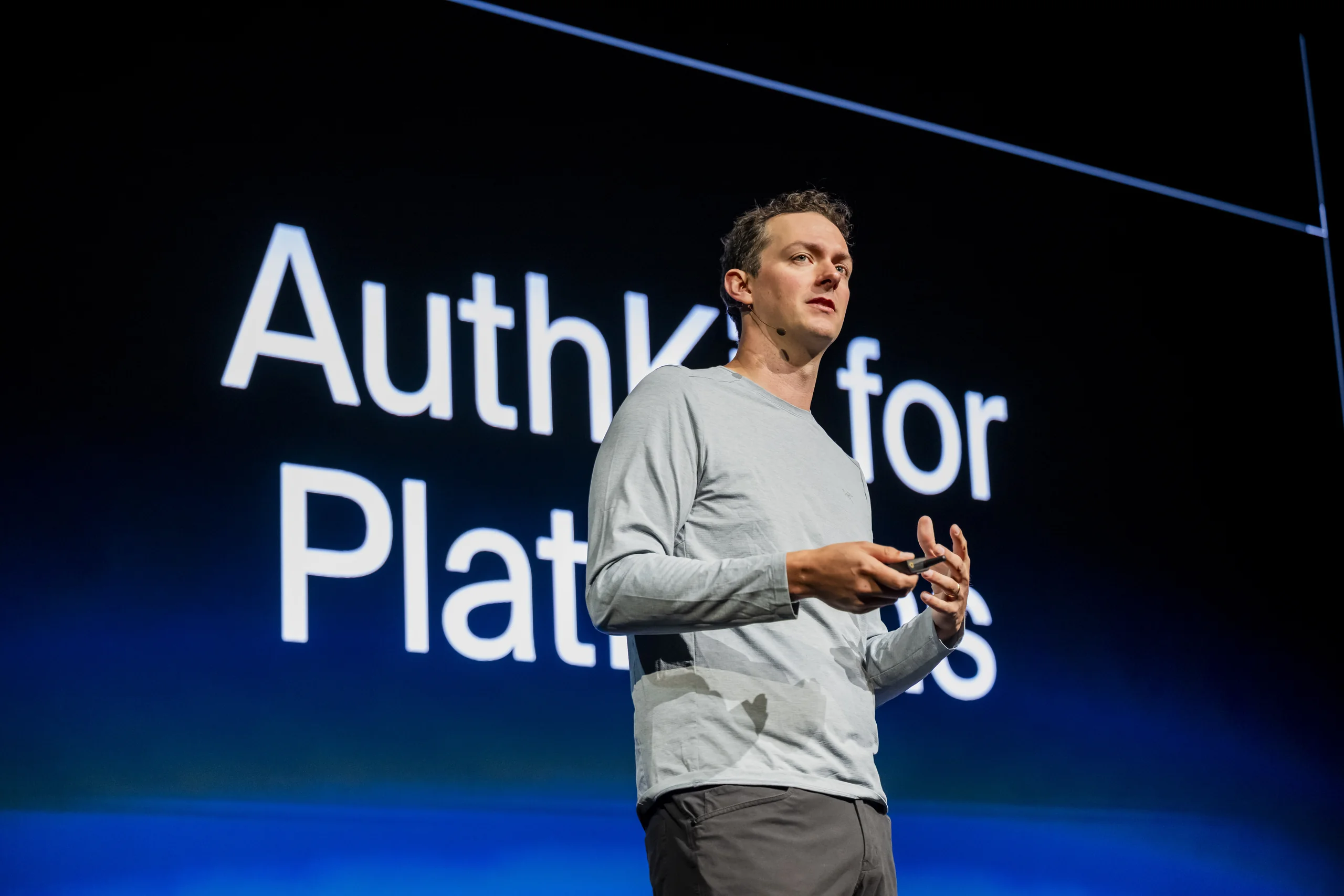
AuthKit provides the complete identity experience that thousands of applications rely on today—the login box, session management, and the full authentication flow. It's the foundation that everything else builds on.
Enterprise IT Integrations
Beyond basic authentication, enterprises need their applications to integrate with their existing IT infrastructure. This includes Single Sign-On (SSO) and SCIM for user provisioning and lifecycle management, Multi-Factor Authentication (MFA) for additional security, and Role-Based Access Control (RBAC) for managing permissions across complex organizations.
Compliance and Visibility
Enterprise customers require audit logs to track every action in the system and admin portals that give their IT teams self-service control over user management. These aren't features that help you get initial product-market fit, but they're absolutely critical for moving upmarket.
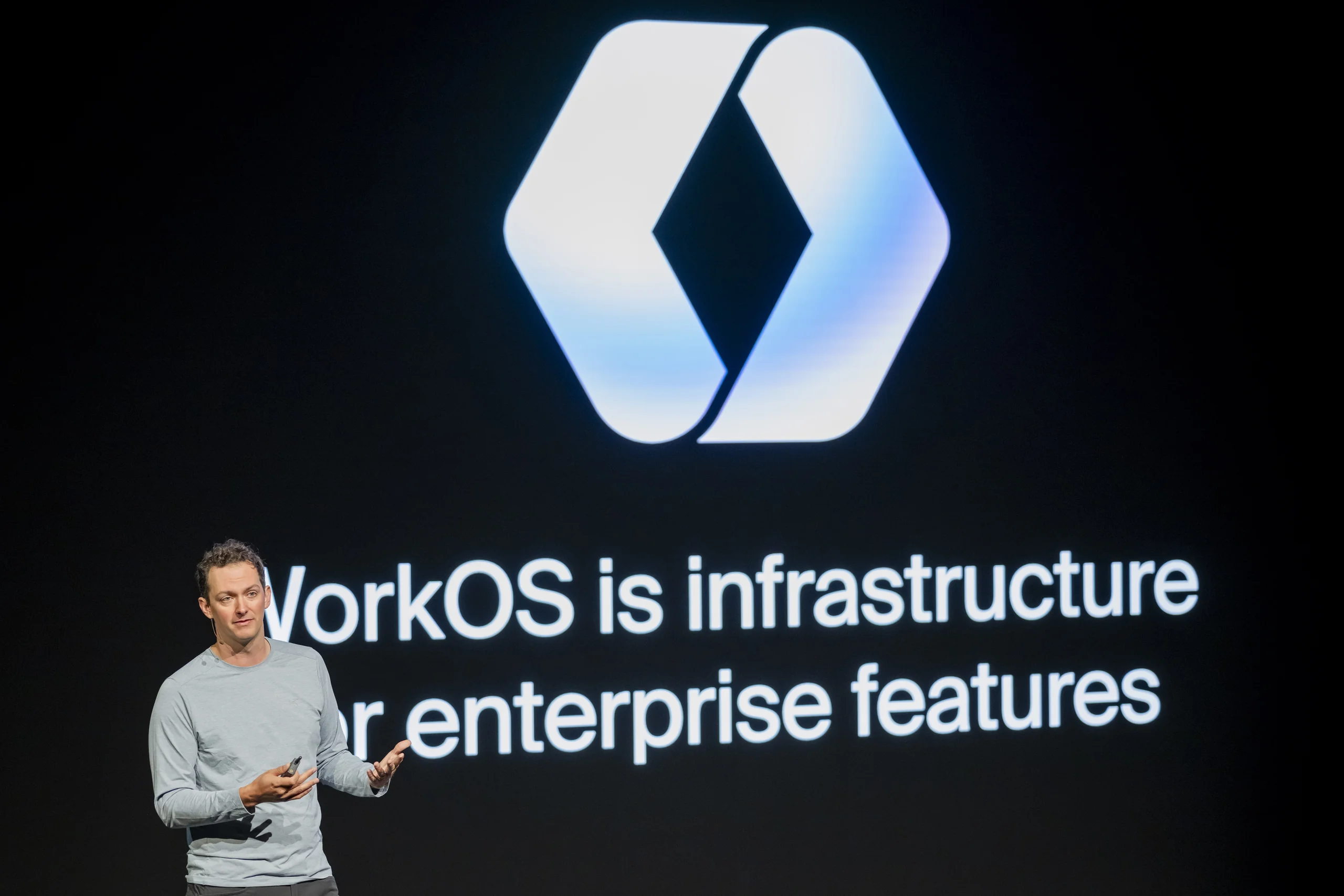
The WorkOS approach: deliver all of this through APIs so developers can integrate enterprise features quickly instead of spending months building them from scratch.
Six Major Product Announcements
With this foundation established, Michael walked through six significant product launches and demonstrations that showed how WorkOS is evolving to meet the challenges of AI-powered enterprise applications.
Auth for ChatGPT Apps
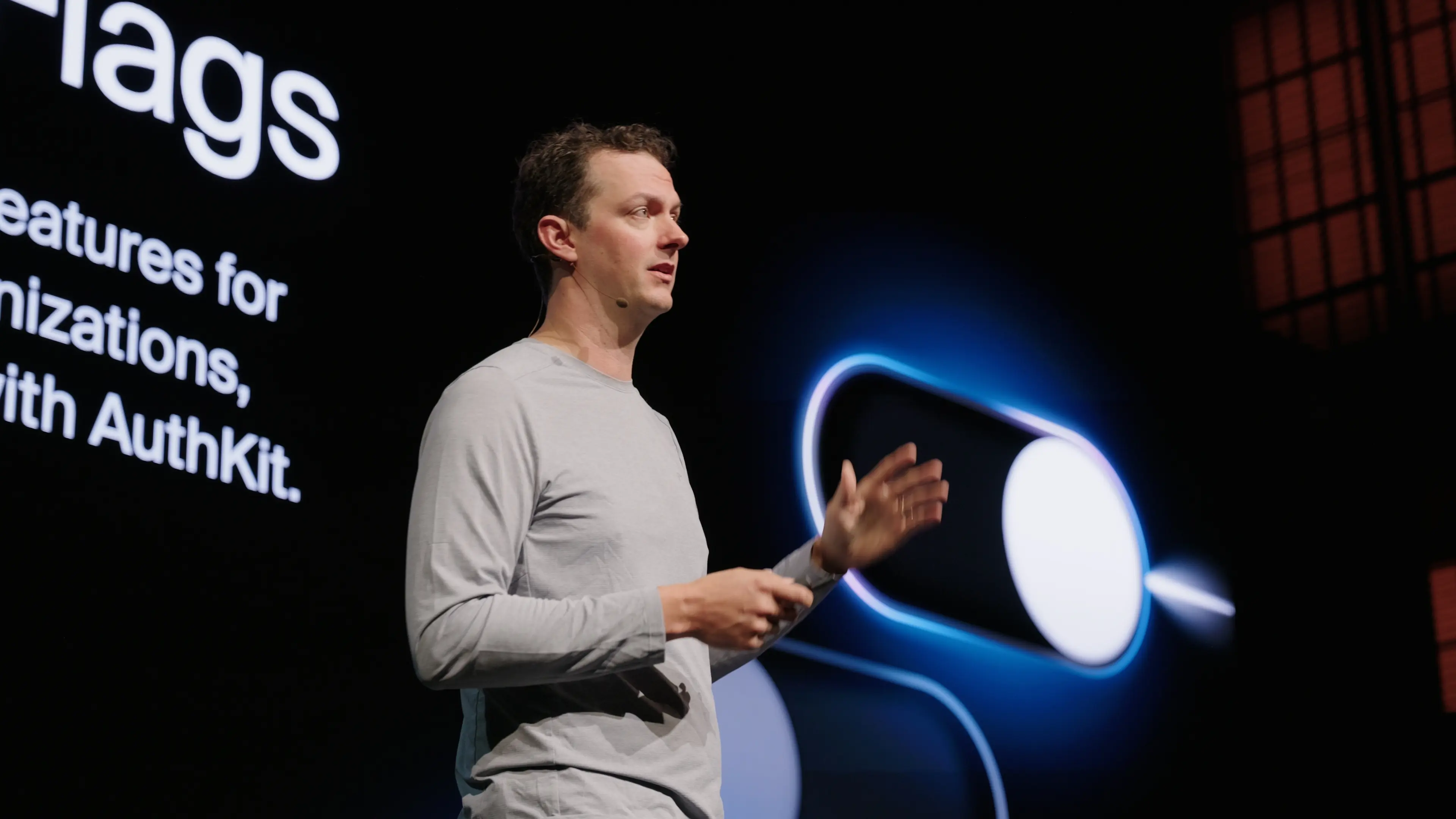
The first demo showed AuthKit being extended beyond web applications to support auth for ChatGPT Apps using the recently announced Apps SDK from OpenAI.
This matters particularly for AI applications, where agents increasingly run on local devices rather than exclusively in the cloud.
AuthKit for Platforms: Embedded Authentication

The second announcement solved a critical challenge for platform builders. When you're creating infrastructure that other developers build on—like Convex for backend development or Supabase for databases—you need to provide authentication as part of your platform.
WorkOS's new platform-embedded authentication lets these platforms integrate AuthKit directly into their developer experience. When someone builds an application on Convex, they get enterprise-grade auth without having to implement it themselves or learn a new auth system. It's authentication infrastructure for infrastructure.
AuthKit and Stripe Billing Integration

The third demo showed deep integration between WorkOS AuthKit and Stripe's billing system. When a user signs up for your application, WorkOS can automatically create their customer record in Stripe. When they upgrade their plan or add team members, those changes sync bidirectionally between the systems.
This solves a persistent pain point: keeping your identity system and billing system in sync. Before, developers had to build custom integration logic and maintain it as both systems evolved. Now it's handled automatically, reducing bugs and ensuring data consistency.
WorkOS Pipes: Third-Party Integrations for AI Agents

The fourth announcement introduced WorkOS Pipes, a new way to handle third-party integrations specifically designed for the age of AI agents.
Here's the challenge: when your application is a conversational interface powered by an LLM, you can't ask users to navigate through traditional OAuth flows. They can't click through authorization screens or paste API keys while talking to an agent.
WorkOS Pipes solves this by providing a management interface where users can configure their third-party integrations once, and then AI agents can access those integrations naturally during conversations. Behind the scenes, Pipes handles OAuth flows, credential management, token refresh, and permission scoping.
The demo showed an AI agent interacting with Salesforce—reading customer data, creating opportunities, and respecting the user's existing permissions in Salesforce. The agent didn't need special integration code; it just worked because WorkOS Pipes had already established the connection.
This represents a fundamental shift in how we think about integrations. Traditional SaaS applications had integration pages with connection buttons and configuration forms. AI applications need integrations that work invisibly in the background, accessible to agents through natural language.
API Keys for AI Agents

The fifth announcement addressed another critical infrastructure need: how do you provide API access to enterprise customers when AI agents are the primary consumers of your API?
Traditional API key management was designed for developers manually calling APIs. You'd generate a key, store it in environment variables, and write code that includes it in HTTP headers. But when AI agents are calling your API, they need keys that are automatically managed, properly scoped to specific permissions, and logged for audit purposes.

WorkOS's new API Keys system provides enterprise-grade key management designed for the AI era. Keys can be scoped to specific permissions, rotated automatically, and every usage is logged with full audit trails. When an enterprise customer's AI agent calls your API, you have complete visibility into who authorized the action and what data was accessed.
This seemingly simple feature actually represents sophisticated infrastructure that most startups would spend months building. WorkOS handles it so developers can ship APIs that their enterprise customers will actually approve for use by their AI agents.
WorkOS Studio: Collaborative AI App Creation

The final demo, presented by Jason Barry, introduced WorkOS Studio—perhaps the most forward-looking announcement of the keynote.
Studio is a collaborative AI app creator, but it's not designed for prototyping random websites or building personal projects. It's specifically built for creating data-rich internal applications within companies. Think dashboards, admin tools, and business intelligence interfaces—the kind of applications that companies typically either buy as SaaS products or build with low-code tools.
The demo showed Jason building a customer success dashboard by conversing with the AI. He asked for a view of customers sorted by account health, and Studio generated the interface. He asked for the ability to create renewal opportunities in Salesforce, and Studio added that functionality—including the critical detail that it respected permissions.
When Jason tried to create an opportunity for an account owned by a different account executive, the button was grayed out. Studio inherited the permission model from Salesforce, so it knew this wasn't allowed. This isn't a feature you bolt on afterward; it's built into the foundation because Studio is built on WorkOS's full platform—SSO, SCIM, RBAC, Audit Logs, API Keys, and Pipes.
The interface is powered by Radix, the same underlying system that powers Shadcn and many other design systems. Radix is open source and built by WorkOS.
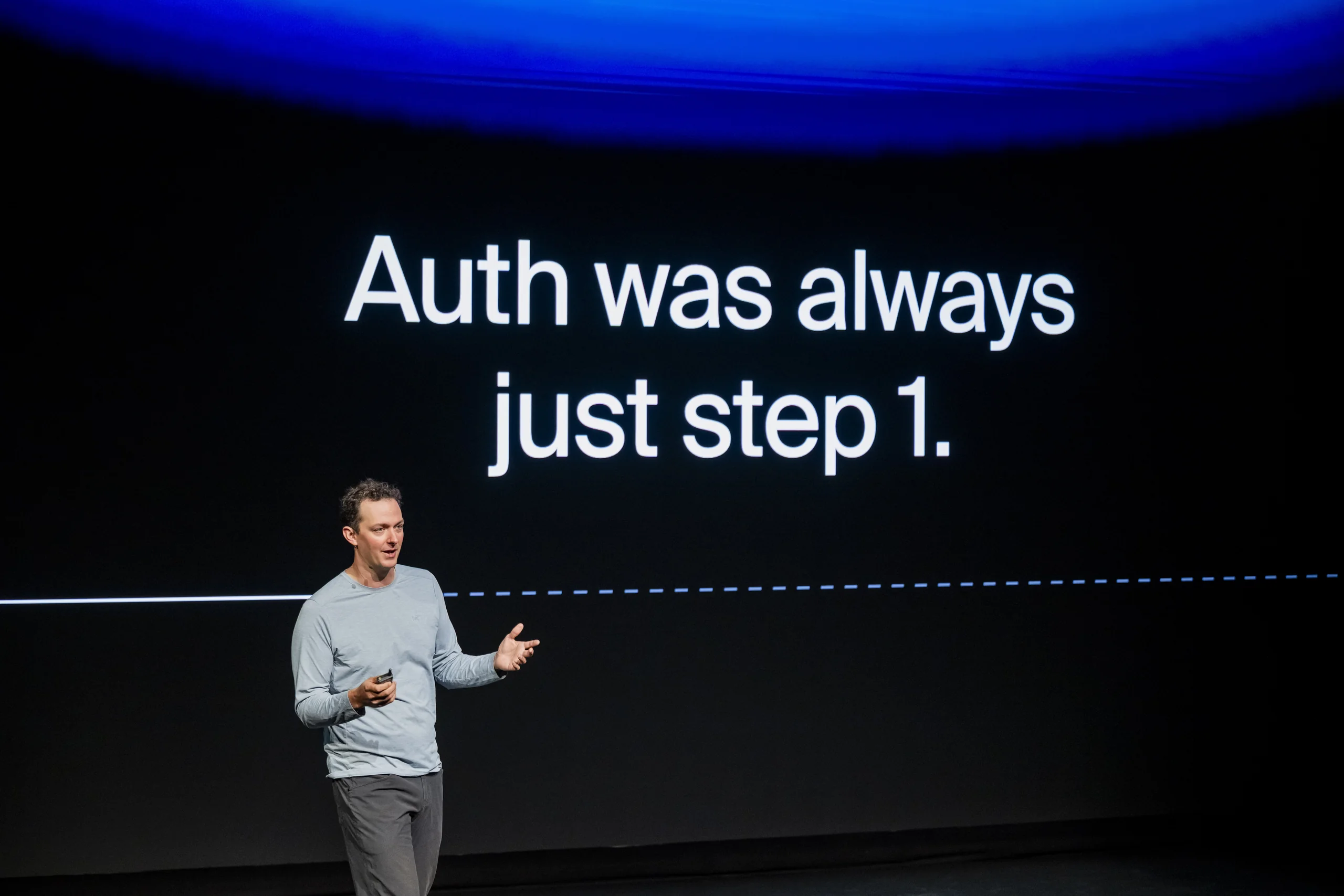
Studio represents what Michael called "vibe coding apps fully enterprise ready"—the ability to create sophisticated internal applications through conversation, but with all the security and governance features that enterprises require from day one.
Moving the Camera: How Medium Shapes Possibility
After walking through six major product announcements, Michael shifted gears entirely. He moved from features and demos to philosophy and history, asking a deeper question: what does it actually mean when the medium changes?
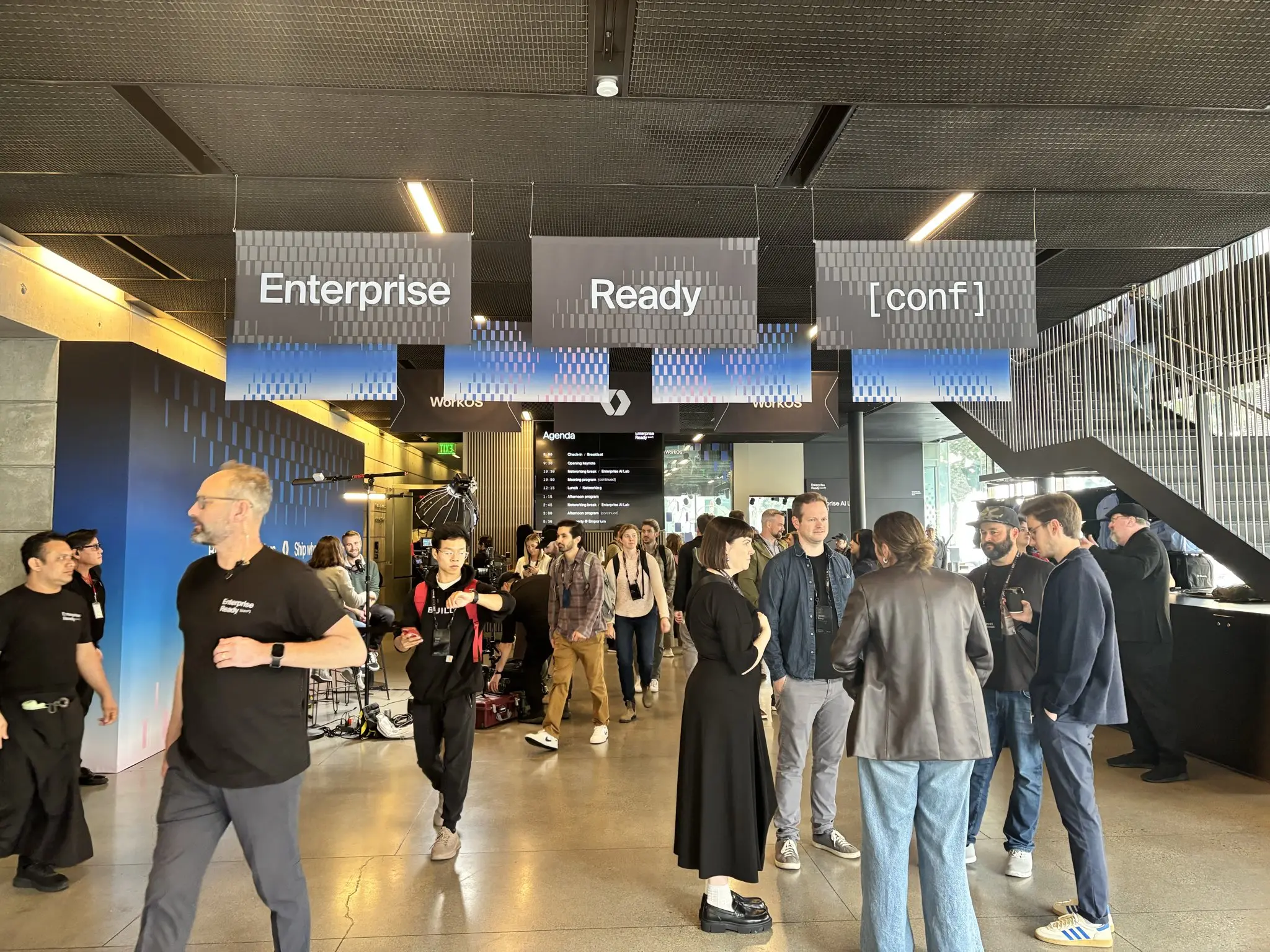
He referenced Marshall McLuhan's famous insight: "the medium is the message." The way information is delivered—radio versus television, for instance—has a greater impact on society than the content within that medium. And right now, Michael observed, the medium is changing with AI.
To illustrate what happens during these transitions, Michael walked through the history of cinema. When film cameras were invented around the turn of the 19th century, the first movies shown in theaters were just plays that had been filmed. Someone set up a camera in the middle of the theater and recorded the performance. People would pay to watch filmed plays in movie houses. This lasted not just a few years, but nearly twenty years.
It wasn't until someone got the idea to actually move the camera that modern cinema was born. This wasn't a technological breakthrough—cameras could always be moved. It was an artistic and cultural discovery about the nature of the medium itself.
Once filmmakers started moving the camera, they kept finding new ways to move it. They created things that earlier generations couldn't have imagined because they discovered what was truly possible with the medium.
The pattern repeats across every technology wave. Early recorded music was just live concerts captured on tape, until the Beatles and others realized they could sequence tracks and create music through the recording process itself. Early television was just filmed radio broadcasts—a person at a desk reading a script. Early video games were just digital recreations of physical games like pinball.
Every time a new medium emerges, we spend time just recreating what came before, until someone figures out how to actually use the unique properties of that medium. And each time this happens, society gets a bit faster at discovering what's possible.
The AI Medium and What Comes Next
Michael's thesis: we're in this transition period with AI right now. We've changed how software is made, but we haven't yet changed what is made with it.
Even with WorkOS Studio—one of the most advanced AI-powered development tools demonstrated at the conference—they're still essentially rebuilding the same dashboards that existed before. They're filming the play. Michael acknowledged this directly: they know they haven't moved the camera yet.
But if history is any guide, it won't stay this way for long. Soon we'll be creating something entirely new.
Michael couldn't say what that would be. Nobody could. But he could invite everyone on the journey to figure it out together—and that's why Enterprise Ready Conference exists. To explore the future together and understand how AI is changing everything about what we build.
The Invitation Stands
Michael's closing invitation was an acknowledgment that WorkOS is building infrastructure during a period of rapid change, and we're doing it in partnership with the thousands of companies that depend on our platform.
The camera will move. Applications will evolve into something we can't fully imagine yet. But the fundamental challenges of enterprise software—identity, authorization, audit trails, integrations, security—those don't disappear just because the interface becomes conversational or the code is generated by AI.
If anything, these challenges become more important. When an AI agent can make purchases, update databases, or send messages on your behalf, you need even stronger guarantees about identity and permissions. When applications are built through conversation rather than traditional coding, you need infrastructure that just works without requiring deep implementation knowledge.
That's the bet we're making, and if Enterprise Ready Conference 2025 was any indication, it's the right one.
Watch more demonstrations and sessions from Enterprise Ready Conference 2025 in our full event recap.